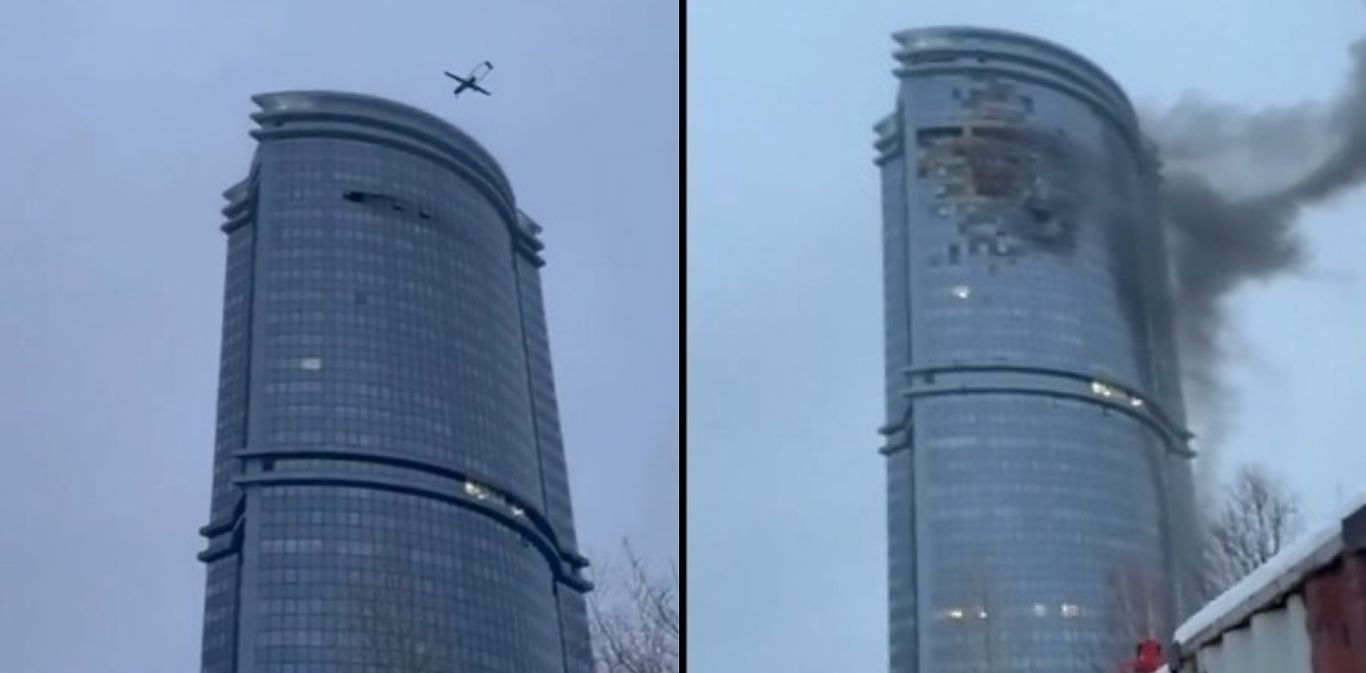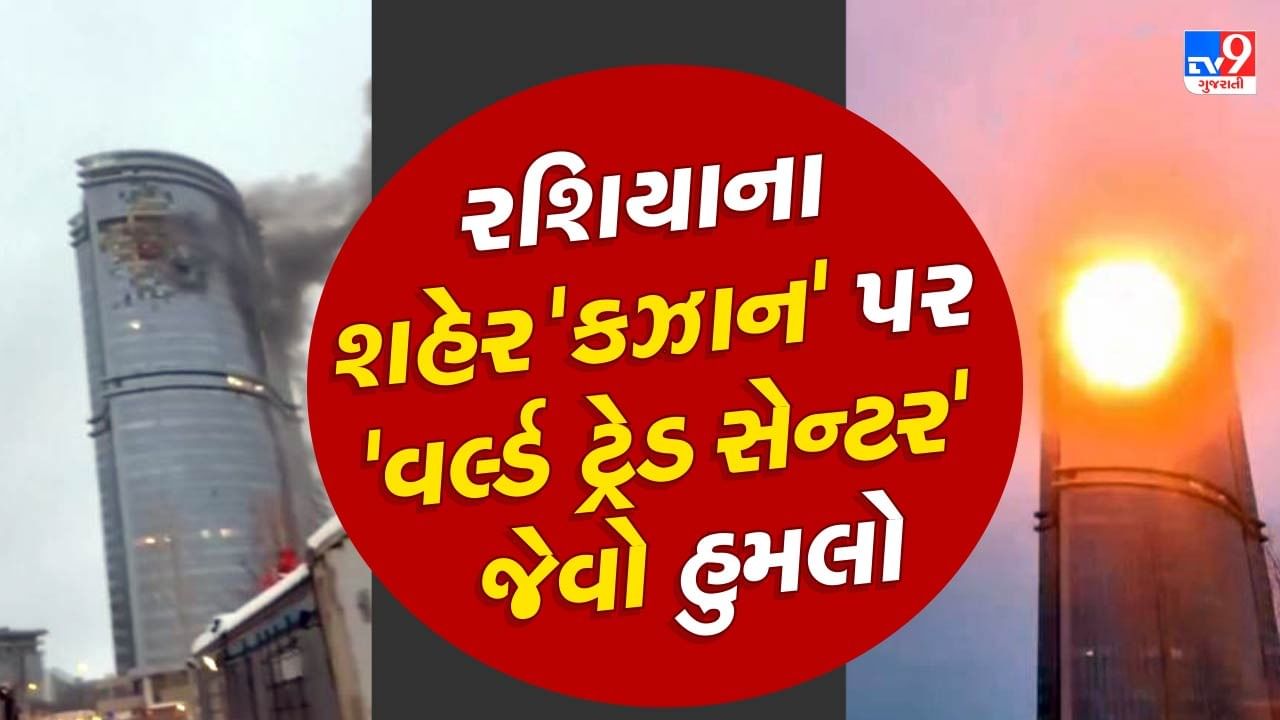Kazan drone attack unfolds as a compelling narrative, blending technological prowess with geopolitical intrigue. This incident, shrouded in uncertainty regarding its perpetrators and motives, offers a fascinating case study in modern warfare and the evolving role of unmanned aerial vehicles. The event’s aftermath has sparked intense debate surrounding attribution, security vulnerabilities, and the future implications for drone technology and international relations.
This exploration delves into the details of the attack, examining the technological aspects, geopolitical ramifications, and public perception surrounding this significant event.
From initial reports of damage and casualties to the international response and subsequent investigations, the Kazan drone attack has raised crucial questions about national security and the escalating use of drones in conflict and acts of aggression. Understanding this incident requires a careful examination of the available evidence, consideration of potential actors, and an analysis of the broader implications for regional stability and global security.
The Kazan Drone Attack: An Analysis
The alleged drone attack on Kazan, Russia, represents a significant event with potential implications for regional security and the broader global landscape of drone warfare. This analysis examines the event’s circumstances, attribution, technological aspects, geopolitical ramifications, media coverage, and necessary security enhancements.
Event Overview: The Kazan Drone Attack

Reports emerged of a drone attack targeting Kazan, a major city in Tatarstan, Russia. The incident involved multiple drones, the exact number remaining unconfirmed. Initial reports suggested damage to infrastructure and potential casualties, though official figures varied. The timeline of events remains unclear, with discrepancies between initial reports from various sources and subsequent official statements.
The recent Kazan drone attack highlights the evolving threat of unmanned aerial vehicles. The incident underscores the need for robust counter-drone technologies, a stark contrast to the more celebratory use of drones, such as those showcased at the impressive orlando drone show. Understanding both the destructive and constructive potential of drones is crucial for navigating the future of this technology, and incidents like the Kazan attack serve as a sobering reminder of its dual nature.
| Date | Time | Location | Type of Damage | Casualties |
|---|---|---|---|---|
| [Insert Date] | [Insert Time] | [Specific Location in Kazan] | [e.g., Building damage, infrastructure disruption] | [Number of injuries/fatalities, if reported; otherwise, “Unconfirmed”] |
Attribution and Responsibility, Kazan drone attack
Determining responsibility for the attack presents significant challenges. Several actors could potentially be involved, each with varying motives and capabilities. Investigating the incident requires a careful examination of available evidence, considering both supporting and contradictory information.
| Actor | Motive | Evidence | Counter-Evidence |
|---|---|---|---|
| [Potential Actor 1, e.g., Ukrainian affiliated group] | [Possible Motive, e.g., Disrupting Russian operations] | [Evidence supporting this actor, e.g., Drone technology used, proximity to conflict zones] | [Evidence contradicting this actor, e.g., Lack of direct claim of responsibility, alternative explanations for damage] |
| [Potential Actor 2, e.g., Internal Dissenting Group] | [Possible Motive, e.g., Protesting government policies] | [Evidence supporting this actor, e.g., Past history of similar actions] | [Evidence contradicting this actor, e.g., Lack of clear connection to the event] |
Technological Aspects of the Attack
Understanding the technological capabilities involved is crucial for assessing the attack’s sophistication and planning. The type of drones, their control systems, and payload (if any) all provide insights into the attackers’ resources and expertise.
The recent drone attacks on Kazan highlight the increasing vulnerability of civilian infrastructure to unmanned aerial vehicles. Understanding the capabilities of such technology is crucial, and advancements in surveillance technology, like those showcased by the cobequid pass camera , offer insights into potential monitoring and defense strategies. Analyzing these systems could inform countermeasures against future attacks like the one in Kazan.
- Potential drone type: [e.g., Multirotor UAVs, fixed-wing drones]
- Control and navigation methods: [e.g., GPS-guided, remote control, autonomous navigation]
- Potential payload: [e.g., Explosives, incendiary devices, propaganda leaflets – specify if known, otherwise state “Unknown”]
Technological challenges and innovations:
- Range and endurance of drones
- Precision targeting capabilities
- Evasion of detection and countermeasures
- Payload delivery mechanisms
Geopolitical Implications
The Kazan drone attack has triggered various reactions from regional and international actors. These responses reflect differing geopolitical interests and assessments of the incident’s significance. The event could also impact future drone technology development and the implementation of countermeasures.
The recent drone attack on Kazan highlights the growing concerns surrounding the misuse of unmanned aerial vehicles. This incident, while geographically distant, shares similarities with other drone-related incidents, such as the unfortunate florida drone accident , which underscores the importance of robust safety regulations and operator training. Ultimately, both events emphasize the need for increased vigilance and improved drone technology to prevent future occurrences and minimize potential harm.
| Entity | Response | Justification |
|---|---|---|
| [Country/Organization 1, e.g., NATO] | [Their Response, e.g., Expressed concern, called for investigation] | [Reasoning behind their response, e.g., Security implications for the region] |
| [Country/Organization 2, e.g., Russia] | [Their Response, e.g., Denial, accusation of another party] | [Reasoning behind their response, e.g., Maintaining national security narrative] |
Public Perception and Media Coverage

Media coverage of the Kazan drone attack has varied significantly across different outlets and platforms. These variations reflect differing perspectives, potential biases, and the complex nature of information dissemination in the digital age. The event’s portrayal on social media further complicated the narrative.
- Example of media bias: [e.g., Focus on specific aspects of the incident while ignoring others]
- Example of inconsistent reporting: [e.g., Discrepancies in casualty figures or damage assessments]
Security and Countermeasures

The Kazan drone attack highlights vulnerabilities in existing security protocols and the need for enhanced counter-drone technologies. Improving drone detection, neutralization, and overall security infrastructure is crucial to preventing similar incidents in the future.
A hypothetical counter-drone system might incorporate:
- Advanced radar systems for early detection
- Jamming technologies to disrupt drone communication and control
- Directed energy weapons for neutralization
- AI-powered systems for threat assessment and response
The Kazan drone attack serves as a stark reminder of the evolving nature of modern conflict and the challenges posed by increasingly sophisticated drone technology. The incident’s ambiguity surrounding attribution underscores the need for enhanced security measures and international cooperation to prevent similar occurrences. Further investigation and analysis are crucial to fully understand the implications of this event, shaping future strategies for drone defense and mitigating the risks associated with this rapidly advancing technology.
The incident highlights a critical juncture in the ongoing dialogue concerning drone warfare and its implications for global security.
Helpful Answers
What type of damage was reported in the Kazan drone attack?
Reports varied, but included property damage and potential injuries, the exact extent of which remains unclear pending official investigations.
Were there any arrests made in connection with the attack?
Information regarding arrests is not publicly available at this time. Investigations are ongoing.
What countermeasures are currently in place to prevent future drone attacks?
Various counter-drone technologies exist, including detection systems, jamming technology, and interception methods, but their effectiveness varies depending on the sophistication of the attacking drones.
